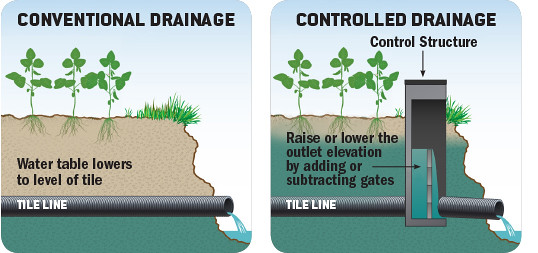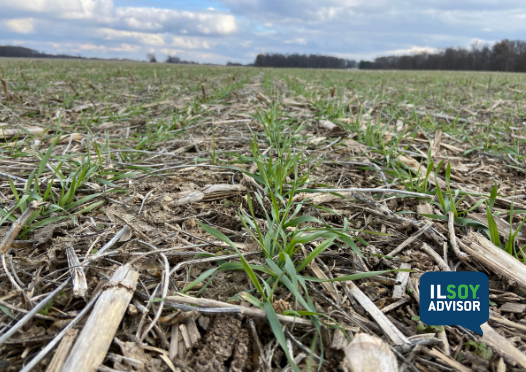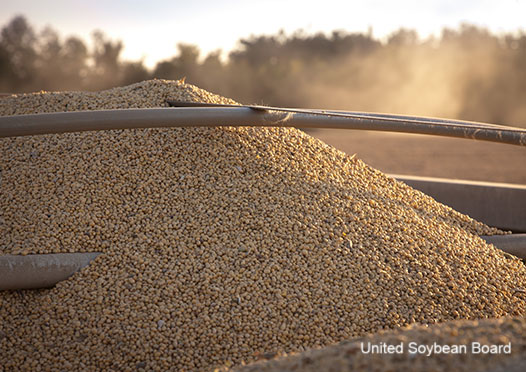ILSOYADVISOR POST
Testing Tech
Soil Health Action Plan:
- Technology plays an important role in nutrient and water management at Schroeder Farms
- Water control structures improve field drainage and water conservation
- Variable rate technology applies nutrients where and when they are needed
Doug Schroeder began farming because he enjoyed driving a tractor. His love for sitting in the cab, hand on the steering wheel, was a big part of his decision to spend his life working the family farm. Now, with technology advancements, he says he barely needs to touch the wheel.
“The cab looks like something from NASA. We have about four LED screens in the combine and probably that many for the planter,” Schroeder says.
Like everything else, technology has revolutionized agriculture and Doug Schroeder’s farm. From GPS-guided tractors to aerial imagery, technology not only improves yield potential but also helps the family farm better manage nutrients and water for the future.
Doug, his son Bob and son-in-law, Matt Turner, are the fourth and fifth generations to operate Schroeder Farms, and they are determined to leave the farm more sustainable for future generations who may be interested in continuing the legacy.
Water Control and Drainage
 One way the Schroeders work to be more sustainable is through water conservation. A portion of the tile drainage systems running beneath their fields have water control structures that help regulate the outflow of water and nutrients.
One way the Schroeders work to be more sustainable is through water conservation. A portion of the tile drainage systems running beneath their fields have water control structures that help regulate the outflow of water and nutrients.
The structures act as dams to hold water in the fields after harvest in the fall. The dam is opened a couple weeks before planting to help drain excess water and prepare the fields for planting. Being able to control runoff can help keep nutrients in the field as well.
“We try to do all we can to minimize any environmental impact,” Schroeder says. “Water control structures have improved our soil health. The number one factor in soil health is probably drainage.”
Technology Improves Nutrient Management
The Schroeders also manage nutrient runoff by applying only the fertilizer they need where it is needed. Variable rate technology (VRT) in conjunction with aerial imagery and yield maps helps the family control their nutrient use.
“If the nutrients you’re paying for end up going off-site or downstream, that’s just a lose-lose situation,” Schroeder says.
The farm is also testing how micronutrients like boron can help them provide better nutrition for their crops. These technologies combine to help the Schroeders balance the soil’s pH levels for a healthy crop.
A lot has changed at Schroeder Farms since Doug took over the operation, and technological innovation is just the latest. But the opportunity to continue learning and the challenge to adapt and solve new problems is what keeps him getting up and going to work every morning.
“I think that is what you love about farming. Every day is different, and we strive to do it better today than we did yesterday,” he says.





Comments
Add new comment